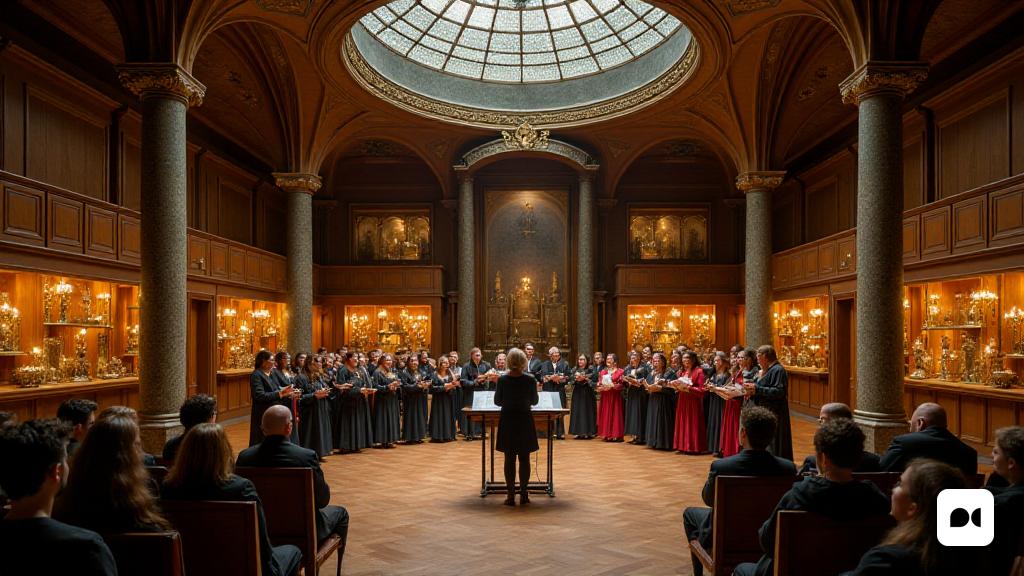A morning of music and nostalgia
Two weeks ago, I had the opportunity to visit the Music Museum on a Sunday and rainy Sunday, a reflection of my mood. The day seemed to threaten to storms, and the museum, with its collection of ancient instruments, fascinated me as always. Those musical relics, guarded in glass showcases, shone with immeasurable beauty, capturing my attention immediately.
A concert that transformed my perception
It was not the first time the museum has been treading, but the reason for that visit was very special: to attend a Gregorian singing concert. My knowledge of this musical genre was limited, despite the years of study. However, I was attracted to the promise of a unique experience, which opens the door to a musical tradition that I did not know almost completely.
The art of feminine voices
The female choir Schola Cantorum Cantus Fugiens from Barcelona, in collaboration with the Barcelona Scholarship Crea 2024/25, offered a repertoire dedicated to the music of the female monasteries. This performance was more than a simple concert; It was a sound exploration that claimed the legacy of women in music, a theme that resonates with the work of Mar Medinyà in his book ‘Murries’, which challenges the traditional narrative of musical history.
A female kaleidoscope
Directed by Chiara Mazzoletti, the artistic proposal of the concert, called ‘Calidoscopium muliebris mediaevalis’, sought to highlight the female sacred, revitalizing a repertoire that, despite being anonymous, played a crucial role in the sound landscape of those times. The first part of the concert included traditional mass chants such as Kyrie and Alleluia, among others.
Key Piece: Hildegard von Bingen
One of the stars of the evening was the antiphon ‘Caritas abundant’ by Hildegard von Bingen, an iconic figure in the history of medieval music. His work, rich in spirituality and depth, resonated through the walls of the museum, transporting us to an age where female voices were as important as the masculine.
Reviving the musical tradition
The second part of the concert included the ‘Mass Pro Mulieribus Pregnantibus’, a mass dedicated to pregnant women. The uniqueness of this mass lies in which it included the oldest known musical manuscript that is preserved in Barcelona. The young soloist Giulia Ferraldeschi, with his formation in Gregorian singing, shone in the Alleluia, providing a new dimension to the interpretation.
A musical journey through time
Finally, the concert concluded with a selection of antiphons, including ‘Alma Redemptoris Mater’ and ‘Salve Regina’. These pieces, representing the heart of religious liturgy, demonstrated the richness and diversity of female sacred music. The active participation of the singers, with solos and instruments, created a vibrant atmosphere that resurfaced the essence of community music.
An unforgettable experience
Attending this concert was a revealing experience. Gregorian singing, with its unique beauty, offered me a new perspective on music and its history. I recommend to anyone who has the opportunity to live a Gregorian singing concert, especially one that claims female voices. It will certainly transform your understanding of our musical origins.

